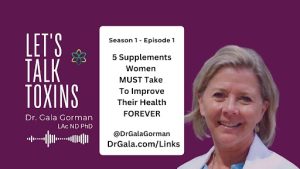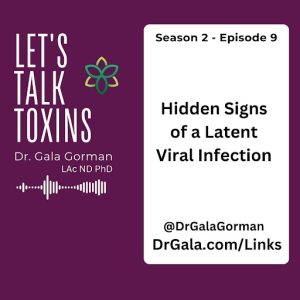Diet is one of the most important things that people with autoimmune disease should consider. The right diet can help ease and sometimes even heal autoimmune diseases. It is also common for people with autoimmune conditions to experience digestive issues.
And, if you’ve been diagnosed with an autoimmune disease, it is considered to be a chronic problem.
Why is it common to have digestive issues with autoimmune disease?
Our digestive systems were not designed to eliminate a lot of the toxins that we are forced to deal with in the world we live in today. According to the National Institute of Diabetes and Digestive and Kidney Diseases (NIDDK), digestive issues are common in people with autoimmune diseases, and managing diet can play a crucial role in alleviating symptoms
What can we do about this?
One of the common ways to address these digestive issues is to follow a restrictive diet. Any diet we consider adopting should be thought through. It has been said many times … but I’ll say it again. What works for another person won’t necessarily work for you. There are a lot of different diets out there, and it’s hard to know which one will work best for you.
Some people can’t tolerate gluten, dairy, soy, eggs, etc., while other people seem to be able to eat all of those things without any problems. It really depends on your body chemistry and how much stress you’re under.
The first thing I would recommend is to get tested for food allergies. This is especially important if you’re having digestive issues, as many foods can cause inflammation in the gut. If you’re not sure what foods bother you, ask your doctor or naturopath about testing. You may also want to try an elimination diet to see if certain foods trigger your immune system.
Dr. Gala’s Quick Take
For women with autoimmune diseases, choosing the right diet is crucial for symptom management. Diets like gluten-free, dairy-free, sugar-free, Keto, Paleo, and Plant-based aim to reduce inflammation and improve gut health. It’s important to personalize the diet based on individual needs and potential food sensitivities, often with guidance from a healthcare professional.
Top 9 Popular Diets
1. Restrictive Diet (Gluten-Free, Dairy-Free, Sugar-Free)

A restrictive diet requires that you limit what you eat based on health needs. Restrictive diets are usually used for short periods of time such as during a dieting phase. They are also used for longer periods of time, like when someone wants to lose weight.
The main goal of a restrictive diet is to reduce the toxins consumed while at the same time, getting all the nutrients needed to maintain health.
Some of the most common types of restrictive diets include gluten-free, dairy-free, and sugar-free diets. The best diet for autoimmune disease often involves removing gluten, dairy, and sugar, as this approach is generally beneficial for most people.
But there are times when these restrictive diets can cause more problems. Take my experience with the gluten-free diet.
I had a chef make homemade gluten-free bread for me. I assumed this would be a great way to adhere to a gluten-free diet.
Little did I know that the gluten-free bread was damaging my digestive system. I decided to get tested and it turned out that I had a problem with the yeast content in the bread.
I did further investigative work and asked the chef about the yeast. I learned that gluten-free bread has two to three times the yeast! They use it to compensate for the missing gluten.
So, as you can see, I was making matters worse when I turned to gluten-free bread!
This is why it is very important to consider your individual food sensitivities or allergies along with the details before deciding to go with a diet.
2. Keto Diet (Ketogenic Diet)
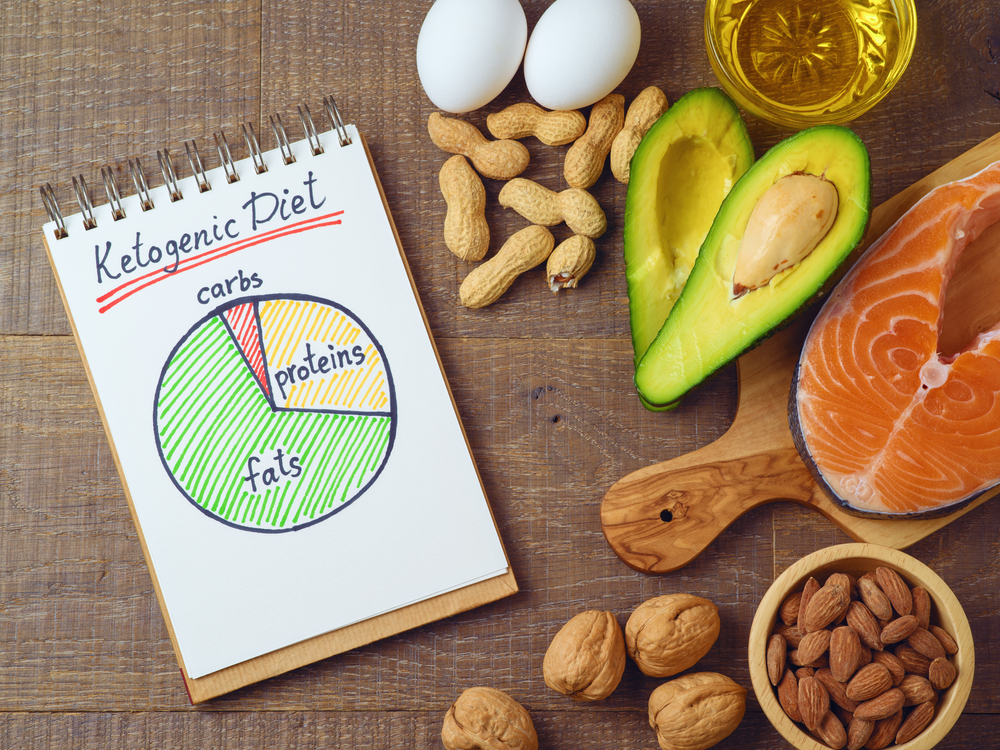
The Keto diet is trending right now. Everybody seems to be interested in this diet.
The ketogenic diet is a high-fat, moderate protein, and low-carbohydrate diet. The main goal of this diet is to put your body into a state of ketosis.
Ketosis happens when your body doesn’t have any carbohydrates or glucose left to use for energy. In turn, it resorts to burning your stored fats for fuel.
When your body burns stored fat instead of carbohydrates and glucose, it results in weight … and fat … loss.
Aside from weight loss, keto is also recommended for those who have health issues. It can help improve insulin sensitivity which reduces the risk of type 2 diabetes. It is also recommended to reduce seizures, especially in children with epilepsy.
There is no denying that the keto diet has a lot of health benefits, but of course, it doesn’t work for everyone.
If you have digestive issues, a high-fat diet can become problematic. For me, it’s impossible to eat that much fat. I never make my macros so it makes me feel like a failure.
If you’re determined to try the keto diet, make sure that it suits you and what you are trying to accomplish. Also make sure that your liver and gallbladder are healthy. Confirm with your doctor that you don’t have any issues there.
3. Low-Carb Diet (Atkins Diet)
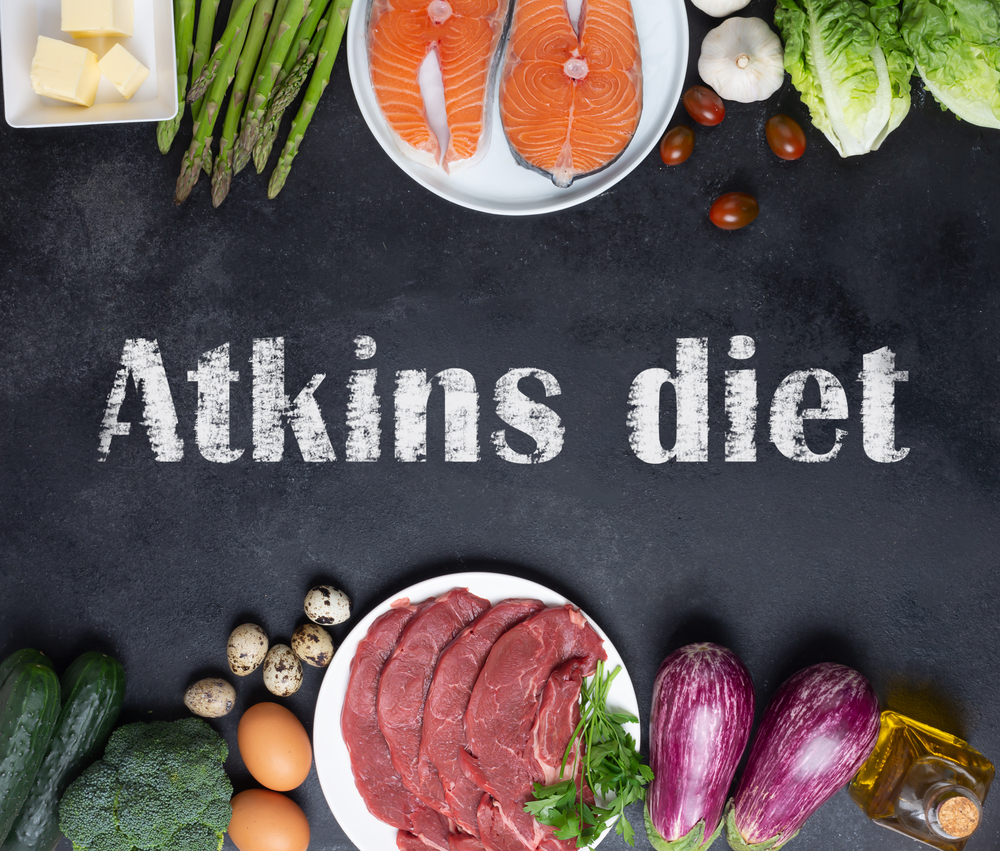
Dr. Robert Atkins made the low-carb diet very popular years ago. In fact, the keto diet seems to be patterned after this diet.
The Atkins diet is a high-protein, low-carb diet that was developed in the 1970’s. It became popular in recent years through books and television shows such as “The Biggest Loser.”
The diet emphasizes eating lean meats, fish, eggs, vegetables, fruits, nuts, seeds, and whole grains.
One of the greatest benefits of the low-carb diet is that it helps you lose weight. Since obesity is a triggering factor for autoimmune disease, this could be a good thing.
However, the Atkins diet is not recommended for long-term practice because it may lead to different health issues. Among these are kidney stones, gallstones, and heart disease.
What I observed in people who follow the Atkins diet is that they tend to eat too much meat as a substitute for carbs. Also, some low-carb snacks are still processed fake food.
Don’t get me wrong. The low-carb diet can be a fantastic option if you’re looking for a diet to adopt. If you’re eating whole foods that are naturally low in carbs, it can be really healthy. Unfortunately, that doesn’t seem to be the case with a lot of people. And, this could create a long-term problem.
4. Carnivore Diet

The carnivore diet is a high-protein, low-carb diet that consists only of meat, fish, eggs, and dairy. This diet has been used for thousands of years in some cultures to help them live longer.
In this diet, people essentially turn into carnivores!
This diet is probably one of the best for people with gastrointestinal tract issues. However, it rarely works for an extended period.
The good thing is that it can help reset your digestive tract and remove a lot of the things that are causing irritation. You need to eat high-quality protein rich in good healthy fat.
The carnivore diet makes sense for a lot of people with digestive issues. Still, like the other diets, it is not recommended for everyone. It is not for people who are suffering from heart disease, diabetes, kidney issues, cancer, or other conditions.
5. Whole 30 Diet

If you’re feeling strong and motivated, the Whole 30 Diet is best for an overall reset. It focuses on eliminating all processed foods from your diet for 30 days. This means no refined sugar, no grains, no dairy, no alcohol, no legumes, and no “bad” oils.
After 30 days, you slowly reintroduce these foods into your diet … noticing what causes a reaction. It becomes clear which foods are inflammatory. And, it’s often things that you didn’t suspect were a problem.
This diet became popular a few years ago. I tried it myself and found it particularly challenging.
Why?
Because it’s nearly impossible to eat out at restaurants, considering the restrictions of this diet. It requires you to drop all grains and anything grain-like. And, there’s no way to control the fats and oils that restaurants use.
When you drop everything (except for olive oil, avocado oil, and maybe a little grass-fed butter), all the common oils found in most store-bought or restaurant-prepared food will render them inedible. I ate out a couple of times during the 30-day period and it was painful for me and the restaurant staff.
So, if you’re going to try Whole 30, plan to eat at home. For me, this was actually the best part of the experience. It forced me to break an unhealthy habit … at least for a month.
The Whole 30 Diet was fantastic overall. I felt great. I ate almost every meal at home. I was never hungry and naturally dropped excess weight.
What’s not to love?
The idea with the Whole 30 Diet is that you’re going to give your digestive tract a break from all the toxic substances you force it to deal with on a daily basis. For me, it was clear that peppers were causing a significant immune response.
When I eat them regularly, my system becomes accustomed to constant inflammation. So, the effects are not as noticeable. That doesn’t make them any less stressful.
The Whole 30 Diet helped me discover foods that are irritating my digestive tract and contributing to health issues. It will probably do the same for you.
6. Plant-based Diet

A plant-based diet is a diet based on whole foods such as fruits, vegetables, nuts, seeds, beans, grains, and legumes. This diet excludes meat, dairy, eggs, and other animal products. The main goal is to reduce the consumption of unhealthy fats and cholesterol, and at the same time increase the intake of fiber and antioxidants.
Plant-based diets are known to help with autoimmune conditions. These include …
- Rheumatoid arthritis
- Lupus
- Hashimoto’s thyroiditis
- Multiple sclerosis
- Psoriasis
- Celiac disease
- Ulcerative colitis
- Crohn’s disease
- Inflammatory bowel disease
- And more.
The main disadvantage of a plant-based diet is that it lacks animal protein. This means that those who are following this diet must consume large amounts of legumes, nuts, seeds, tofu, and other vegetable and non-meat sources of protein. Unfortunately, these foods are high in calories and may cause weight gain.
Another disadvantage is that meat contains iron, zinc, vitamin B12, and omega-3 fatty acids. These nutrients are essential for growth and development. No vegetarian alternatives can replace these so you must supplement … which is not something I recommend long-term.
7. Paleo Diet/Autoimmune Paleo Diet (AIP)
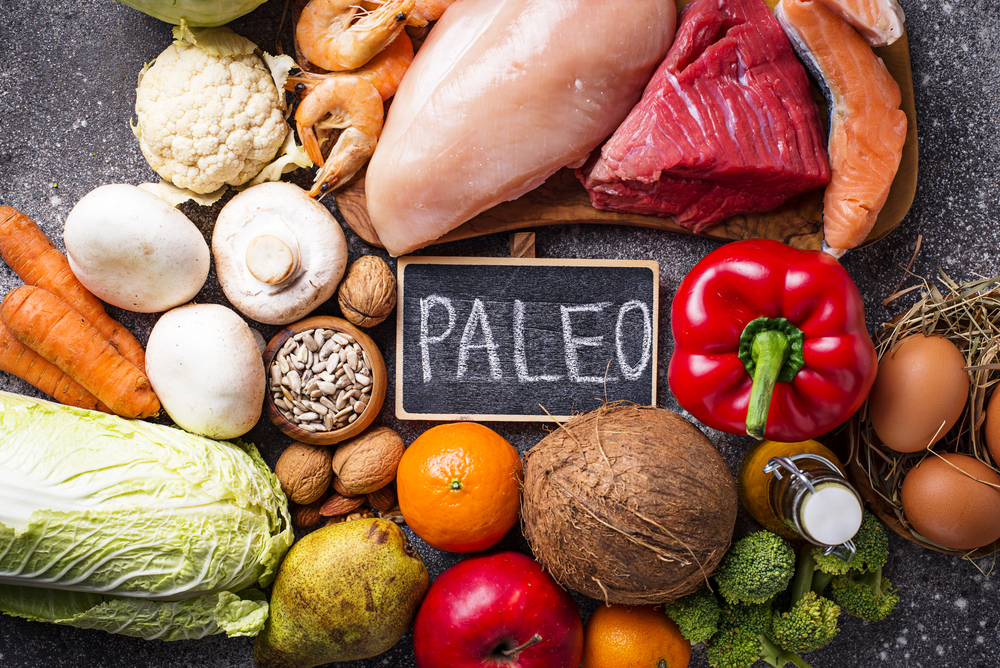
The Paleo Diet is based on the premise that humans were designed for a hunter-gatherer existence. It is also based on the idea that modern diets are unhealthy.
This diet focuses on consuming foods that would have been available during Paleolithic times. This includes meat, fish, vegetables, fruits, nuts, seeds, eggs, dairy, and honey.
The Paleo Diet was popularized by Dr. Loren Cordain, who wrote the book, The Paleo Answer.
This diet has many health benefits. It includes improved digestion, increased nutrient absorption, reduced inflammation, and better health.
There is another type of Paleo Diet that was developed specifically for people with autoimmune disease. This is called the Autoimmune Paleo Diet (AIP) which was developed by Dr. Natasha Campbell-McBride.
This diet focuses on eating foods that are high in protein, healthy fats, and vegetables. It avoids processed food, sugar, gluten, dairy, soy, and grains.
AIP diet has been used successfully for treating several conditions such as Crohn’s disease, ulcerative colitis, celiac disease, and multiple sclerosis.
If you have been diagnosed with an autoimmune condition and you want to better manage your symptoms, the AIP diet may be right for you. By identifying the foods which cause inflammation, the diet helps reduce inflammation, promotes gut healing, and improves your symptoms.
8. Intermittent Fasting (OMAD)

Intermittent fasting involves abstaining from eating for a prolonged period of time. Usually, this period ranges from 12 to 40 hours. For example, you don’t eat for 16 hours straight, but instead, eat two meals in what’s known as an “eating window.”
The concept behind this diet is that your digestive system needs time to rest and heal. When eating small meals throughout the day, you might control hunger but your digestive and other systems suffer. pangs.
Intermittent fasting is not intended to reduce calories but it may help those who tend to overeat when eating multiple larger meals or are accustomed to frequent snacking. So, along with the health benefits associated with digestive rest, you may also experience weight and fat loss.
Intermittent fasting has been shown to increase energy expenditure, decrease inflammation, and boost metabolism.
The main disadvantage is hunger during the fasting period. Hunger is a signal that your body sends when it’s used the available glucose. If you can manage the transition period, your body will switch to using fat for fuel. And, most of us would love to have a bit less body fat.
A couple of cautions … watch yourself during your eating window. While you should eat to a feeling of satisfaction, you don’t want to overeat. And, if you are too aggressive with your fasting, it may increase stress levels which will sabotage much of the benefits that typically result from fasting.
9. Food Combining

Food combining is a diet plan that combines foods from different food groups together to create balanced meals. The theory behind food combining is that certain combinations of foods help to balance blood sugar levels. This helps prevent cravings for sweets and other high-calorie foods.
Certain foods should be eaten at different times throughout the day. Since you’re still eating regularly, you avoid overeating and provide nutrients with each meal.
Some studies suggest that food combining may not work as well as previously thought. So, you may want to use a modified version that is a hybrid of several of the diets we’ve discussed here.
There are two types of food combinations:
Fruit and Vegetable Combining
Foods that contain carbohydrates should be combined with proteins or fats. For example, fruit can be eaten at any time of day. But if you eat fruit with carbs, then you will experience an insulin spike. If you combine fruit with protein, like chicken or steak, there won’t be an insulin spike.
Protein Combining
Foods that are rich in protein should be combined with fat-free foods. For example, lean meats can be eaten with salad dressing. Bread and pasta, on the other hand, can be eaten with butter or oil.
Food combining can help to reduce cravings for unhealthy foods. You may find that you eat less at each meal. It also has several health benefits. This includes improving digestion, boosting the immune system, and improving mental clarity.
Which Diet is Best for Autoimmune Disease?
As a reminder … what works for one person won’t necessarily work for you. Every single body is different. If you want to adopt a certain diet, you should think it through and not just jump into the diet that is currently popular.
Take my experience with gluten-free bread, for example. While most people would think that eating gluten-free bread is a good choice, I found that the additional yeast created unpleasant side effects.
A doctor once told me …
“Any diet will work as long as we’re committed to it for an extended period of time.”
That extended period of time is at least six weeks, but probably longer to clean out our system and then allow for time to heal.
Any type of dietary restriction is most likely going to have positive effects. What you need to do is to find a way of eating … or consuming your fuel … that’s going to work for you long-term.
And don’t forget. Food also brings us joy. It’s called “comfort food” for a reason!
“If you came into my office, I’d ask you a lot of questions that would help us connect the dots … so that together we can deal with your toxic stress.
Every situation is unique and you need a plan that works for you. Not a one-size-fits-all solution.
If you’re thinking you can’t come into my office, don’t worry. I’ve created a program with all of my initial recommendations to help you unravel the mystery. You can use it at home and at your convenience.
So if you’re thinking that managing chronic stress just isn’t possible … or even the answer … for you, I want to show you what you may be missing.
And how you can identify the toxic stressors that are creating your symptoms with my Human Energy System Reboot. You can get started HERE.” – Dr. Gala




